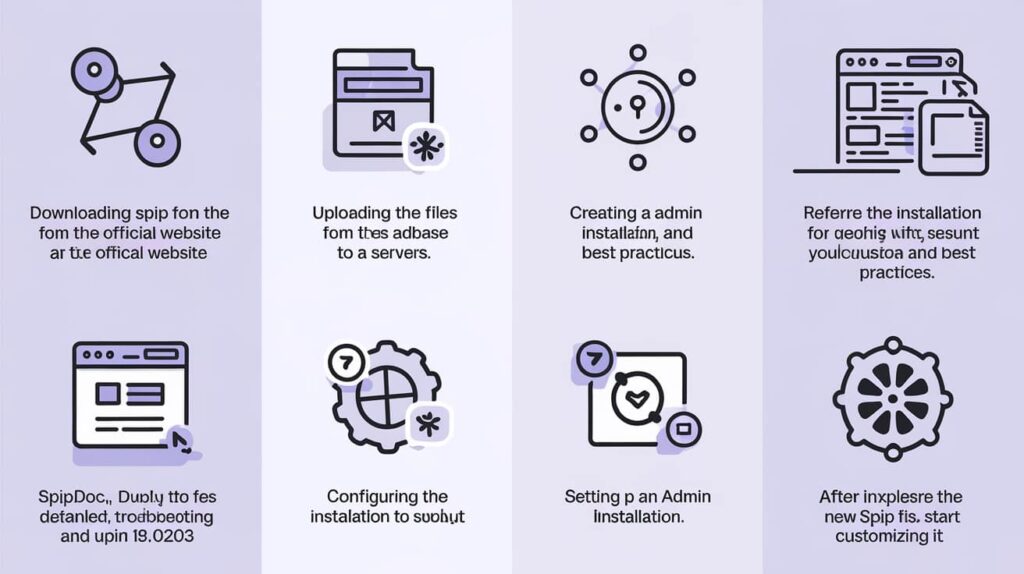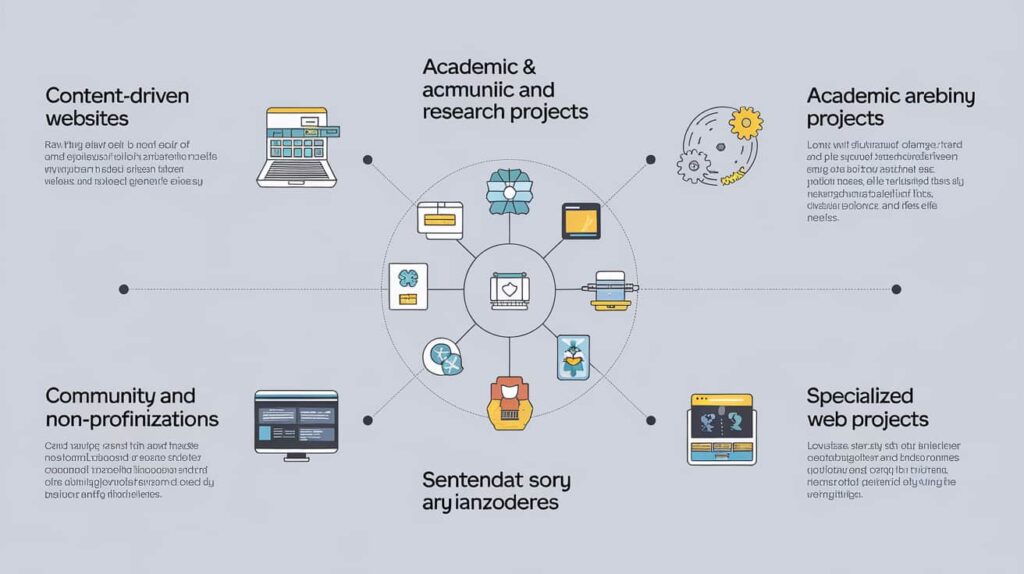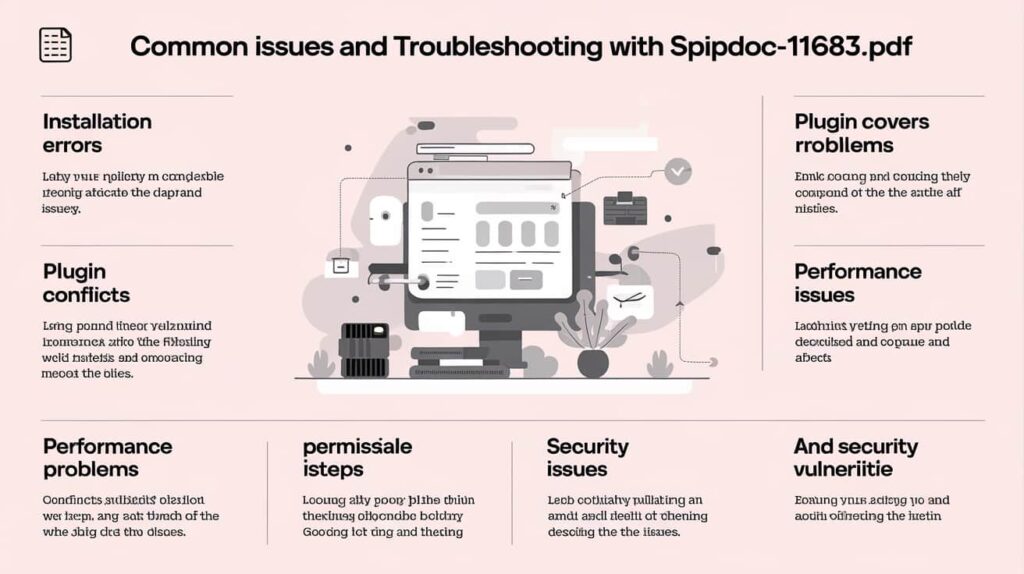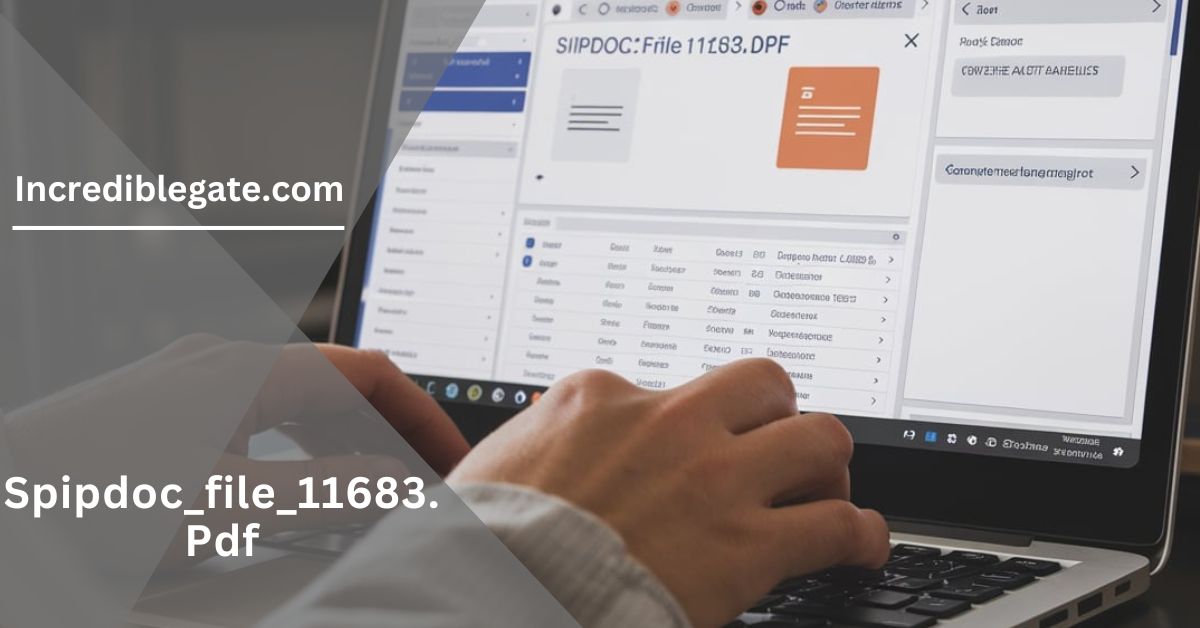When I first started using SPIP, spipdoc_file_11683.pdf was a lifesaver for setting up my website. It walked me through every step, making the process easier and less stressful.
spipdoc_file_11683.pdf is a SPIP documentation file that likely provides important guidance for users, developers, or administrators on setting up and managing SPIP websites. It helps with installation, customization, or troubleshooting.
Stay tuned as we discuss spipdoc_file_11683.pdf and its offerings. We’ll share useful insights to help you understand its purpose. Keep following to learn more about this important SPIP documentation.
What Is Spip? – Learn About Spipdoc_file_11683.Pdf!
SPIP (Système de Publication pour l’Internet Partagé) is an open-source content management system for collaborative web publishing. Created for news websites, SPIP has evolved into a versatile platform suitable for various web projects. It allows multiple users to manage and edit content simultaneously, making it ideal for community-driven sites.

With features like customizable templates and a robust plugin system, SPIP provides flexibility for unique web applications. Documents like spipdoc_file_11683.pdf are essential resources that guide users in effectively navigating and utilizing SPIP’s functionalities. Whether you are a developer, administrator, or content creator, understanding SPIP and its documentation is crucial for successful website management.
Key Features Of SPIP In Spipdoc_file_11683.Pdf – You Must Read!
As stated in spipdoc_file_11683.pdf, the document focuses on the instructional guides for the targeted audience that enhance the usability of SPIP as CMS. Some of the important features that were reviewed include the following.
- Collaborative Publishing: SPIP allows the website’s framework to incorporate multiple individuals simultaneously with the database, thereby making the whole content more easily cubed. This capability is especially beneficial for companies and communities that have multiple contributors.
- Multilingual Support: The platform considers the languages its users may speak and thus offers enhanced multilingual features. This means that content can be made in different languages, increasing its scope and availability.
- Customizable Templates: SPIP facilitates different templates that users can use to develop the sites aesthetically. For users who are not developers, it is easy to alter rudimentary design and layout without necessarily being too technical.
- Plugin System: SPIP’s plugin system is effective as it enables the extension of the platform’s core capabilities with other features. Such extensibility allows users to build websites according to their purpose, whether e-commerce or social networks, among other things.
- Comprehensive Documentation: Documents like spipdoc_file_11683.pdf provide useful assistance to users who are looking for instructions regarding the features and how to use them efficiently. This helps to remove the confusion that often new users may feel as they try to work with the new platform.
- Security Features: Security is highly prioritized in SPIP, as evidenced by the system’s role-based access control feature, which allows administrators to set the level of user privileges and hide sensitive information. This is important to avoid girdering the website.
Why Documentation Matters In SPIP? – An Overview!
| Reason | Description |
| Guidance for New Users | Provides essential instructions for installation and basic usage, making it easier to get started. |
| Technical Support for Developers | Offers detailed technical references, helping developers understand SPIP’s architecture and APIs. |
| Resource for Administrators | Serves as a reference for managing user roles, permissions, and system configurations effectively. |
| Troubleshooting Assistance | Helps users resolve issues quickly with troubleshooting steps and solutions. |
| Best Practices and Security Guidance | Includes best practices for maintaining a secure SPIP installation and protecting user data. |
| Improved User Experience | Enhances overall user experience by providing clarity and reducing confusion related to the platform. |
| Consistency Across Projects | Ensures a standard approach to using SPIP across different projects, making collaboration easier. |
| Community Contributions | Reflects input from the SPIP community, incorporating shared knowledge and experiences. |
How To Install Spip Using Spipdoc_file_11683.Pdf? – Easy Steps!
Let me tell you, Installing SPIP can be easy if you follow the steps in spipdoc_file_11683.pdf. So, here’s what such an installation typically looks like:
- Download SPIP: Go to the website of SPIP and download the most recent version of the SPIP package.
- Upload Files to Your Server: Use an FTP client to transfer the SPIP files you downloaded to your web server. They should be placed in the location where the site’s directories are to be kept.
- Create a Database: Access your web hosting control panel and create a new MySQL database. Note the database name, username, and password, as these will be required during installation.
- Configure the SPIP Installation: Go to your web panel of the SPIP directory. The installation script should, as a rule, do that and guide you through the installation of the necessary MySQL settings. Provide the data pertaining to the database created above.
- Set Up Admin Account: Follow the prompts on the interface to create an admin account. This account will allow you to administer your SPIP site.
- Complete the Installation: The last step in the installation process will be finalized by the installation script as soon as all the necessary data has been provided. Following installation, remember, for safety reasons, to remove the ecrire directory.
- Refer to spipdoc_file_11683.pdf: Throughout the installation process, consult spipdoc_file_11683.pdf for complete guidance on resolving conflicts during the installation and performing the correct sequence of actions required for a fruitful installation.
- Explore Your New SPIP Site: After the procedure is completed, use your SPIP admin panel to log in and begin incorporating new features and personalizing your site and its contents.

How To Use Spipdoc_file_11683.Pdf To Navigate The Spip Admin Interface?
Navigating the SPIP Admin interface can be made easier by following the guidance provided in spipdoc_file_11683.pdf. Here’s a quick overview of how to use this document for effective navigation:
Familiarize Yourself With The Layout:
Open spipdoc_file_11683.pdf and start by reviewing any sections that describe the main components of the SPIP Admin interface. Understanding the layout will help you locate features more quickly, making your overall experience more efficient.
Refer To Navigation Menus:
Look for specific references in the document regarding the navigation menus. These sections will guide you through various options, such as creating content, managing users, and configuring settings, ensuring you don’t miss any important functionalities.
Follow The Step-By-Step Instructions:
Use the step-by-step instructions in spipdoc_file_11683.pdf to complete specific tasks within the admin panel. These could include adding new articles or managing media files, helping you build your site systematically and confidently.
Utilize Visual Aids:
If the document includes screenshots or diagrams, correlate them with what you see on your screen. This visual guidance can make navigation more intuitive and help reduce confusion when locating certain features.
Access Troubleshooting Tips:
If you encounter difficulties navigating the interface, refer to the troubleshooting section in spipdoc_file_11683.pdf. It often contains solutions for common issues users face, empowering you to resolve problems without unnecessary delays.
Bookmark Important Sections:
If you find certain parts of spipdoc_file_11683.pdf particularly helpful, consider bookmarking them for quick reference in the future. This will save you time as you work in the SPIP Admin interface, allowing you to focus on content creation and site management.
What Are the Practical Applications and Use Cases of spipdoc_file_11683.pdf?
The spipdoc_file_11683.pdf document can serve various practical applications and use cases within the SPIP ecosystem. Here are some potential applications:
- Guiding New Users: New users can refer to spipdoc_file_11683.pdf to get step-by-step instructions for setting up their first site. It can help them understand the basic functionalities of SPIP, making the learning process smoother.
- Supporting Developers: This document can be used by developers as a reference for SPIP’s API functionalities. It provides crucial information on creating custom plugins and themes, enabling tailored solutions for specific needs.
- Enhancing Content Management: Content managers can leverage spipdoc_file_11683.pdf to learn best practices for organizing and managing content. It offers insights into using categories, tags, and metadata to ensure a well-structured content system.
- Ensuring Security: The document may include important security guidelines for maintaining a secure SPIP installation. Following these practices helps administrators safeguard their websites against potential threats.
- Streamlining Maintenance Tasks: For administrators, spipdoc_file_11683.pdf is a valuable resource for routine maintenance tasks. It guides users through updating SPIP and troubleshooting common issues efficiently.
- Facilitating Team Collaboration: Since SPIP is designed for collaborative content management, the document can help teams work together effectively. It outlines strategies for version control and content approval workflows to enhance teamwork.
The Broader Role Of Spip In Web Development:
SPIP’s reputation as a flexible CMS that supports community-driven projects makes it more than just a tool for web publishing. The platform’s features cater to different needs across industries, from news outlets and academic institutions to non-governmental organizations and local community sites. Below are some of the broader roles SPIP plays in web development:
Content-Driven Websites:
SPIP’s initial focus on media and content-rich sites suits news outlets, blogs, and digital magazines. Its collaborative article creation and multimedia management support helps publishers streamline content workflows.
Academic And Research Projects:
Due to its collaborative nature, SPIP is also widely used for academic publications and research projects. It allows multiple authors to contribute content, publish findings, and maintain project documentation in a centralized platform.
Community And Non-Profit Organizations:
SPIP’s flexible template system and role-based access control make it an ideal choice for community-driven projects. For example, local organizations can create portals for member contributions, event management, and resource sharing.
Specialized Web Projects:
With the extensive plugins available, SPIP can be customized for various specialized web projects, such as forums, e-commerce sites, or digital archives. Its flexible architecture allows developers to tailor functionalities to meet the unique requirements of different projects, making SPIP a versatile choice for diverse online needs.

Advantages Of Having A Well-Documented SPIP System:
A CMS with robust documentation has numerous advantages:
- Improved User Adoption: Easier learning curve for new users who can quickly understand how to use the system.
- Enhanced Development Capabilities: Developers can extend SPIP’s functionalities confidently when clear API documentation is available.
- Efficient Troubleshooting: Having a detailed reference makes resolving errors or performance issues quicker and more straightforward.
- Security Assurance: Administrators can follow the best documentation practices to maintain the platform’s security.
Which Advanced Spip Configurations Are Included In Spipdoc_file_11683.Pdf?
| Configuration Area | Description |
| Custom Theme Development | Guidelines for creating and customizing themes for SPIP sites. |
| Database Optimization | Techniques for optimizing database performance and queries. |
| User Role Management | Advanced settings for managing user permissions and roles. |
| Caching Strategies | Methods to implement caching for improved site performance. |
| Plugin Configuration | Instructions for setting up and configuring various plugins. |
| SEO Optimization | Best practices for optimizing SPIP sites for search engines. |
| Multilingual Support | Configuring SPIP to handle multiple languages effectively. |
| Security Enhancements | Advanced security configurations to protect the site. |
How To Utilize Documentation Like Spipdoc_file_11683.Pdf Effectively
To make the most out of documentation files such as spipdoc_file_11683.pdf, here are some best practices:
- Follow Sequentially: If it is an installation or configuration guide, follow the steps in the given order.
- Search for Keywords: Use PDF readers’ search function to find specific terms related to your current task.
- Bookmark Frequently Used Sections: For large documents, bookmark sections that are most relevant to your role.
- Keep Documentation Updated: If you are maintaining internal documentation, always update it based on the latest version of SPIP.
Common Issues And Troubleshooting With Spipdoc_file_11683.Pdf – Need To Know!
Installation Errors:
Users may encounter issues during installation, such as missing files or incorrect database configurations. spipdoc_file_11683.pdf can provide troubleshooting steps to resolve these common installation problems.
Plugin Conflicts:
Sometimes, plugins may not work well together, leading to site functionality issues. The document can guide users in identifying and resolving plugin conflicts, helping maintain a seamless user experience across the site.
Permission Problems:
Incorrect user permissions can prevent content creation or editing. spipdoc_file_11683.pdf likely includes information on configuring user roles and permissions effectively, empowering administrators to manage access levels accurately.

Performance Issues:
Slow loading times or unresponsive pages can frustrate users. The document may offer tips on optimizing site performance, including caching strategies and database optimization, allowing for a smoother and faster browsing experience.
Security Vulnerabilities:
Users may face security issues if their SPIP installation is not properly configured. spipdoc_file_11683.pdf can highlight best practices for securing the site and preventing unauthorized access.
Frequently Asked Questions:
How Does It Differ From Other Cms Platforms?
SPIP differs from other CMS platforms by emphasizing collaboration and decentralized content management, making it ideal for multi-author projects. Its strong support for multilingual sites and customizable templates distinguishes it from many other CMS options.
What could spipdoc_file_11683.pdf contain?
The document might be an installation guide, a developer reference, a user manual, or a security guide related to SPIP. Its content could vary depending on the intended audience (new users, developers, administrators).
Is Spip Suitable For Non-Developers?
Yes, SPIP is designed for non-developers. It features user-friendly content management capabilities, customizable templates, and extensive documentation to assist users in navigating the platform.
How Does Spip Support Multilingual Websites?
SPIP offers native multilingual support, enabling users to create content in multiple languages, switch languages in the backend interface, and manage translations seamlessly.
How Does Spipdoc_file_11683.Pdf Help With Security?
The document may include security guidelines to help users protect their SPIP installation. It might cover best practices for user permissions, updates, and securing files. This ensures that the website remains safe from vulnerabilities.
How Can Spipdoc_file_11683.Pdf Improve Website Performance?
If the document covers optimization techniques, it can guide users in improving site speed and responsiveness. This could involve caching strategies, database tuning, or server configurations. Enhanced performance leads to a better user experience.
Can Spipdoc_file_11683.Pdf Help With User Role Management?
The document may contain instructions on configuring user roles and permissions in SPIP. Proper role management ensures that content access is controlled securely, which is especially useful for collaborative sites.
Conclusion:
spipdoc_file_11683.pdf is an important document for anyone using SPIP. It provides valuable guidance on various aspects of the CMS, including installation, troubleshooting, and advanced configurations. The document helps users make the most of SPIP’s features, supporting developers, administrators, and content creators alike.
Offering useful tips and instructions ensures a smoother experience with SPIP. Well-organized documentation like this is crucial for running a successful website.
Also Check:

